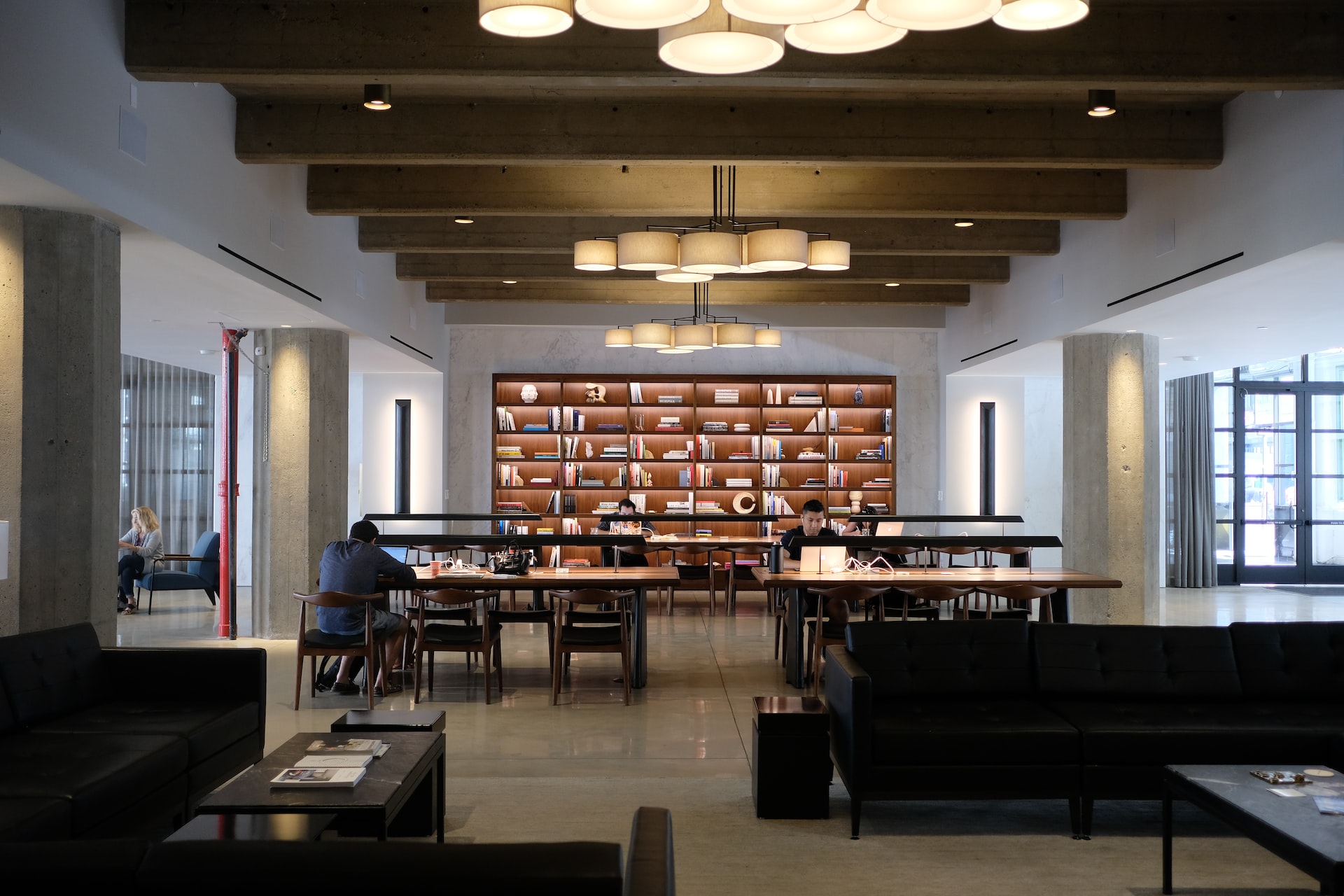- Coworking
- Coworking Resources
What Is Space Management? A Guide for Workspace Teams
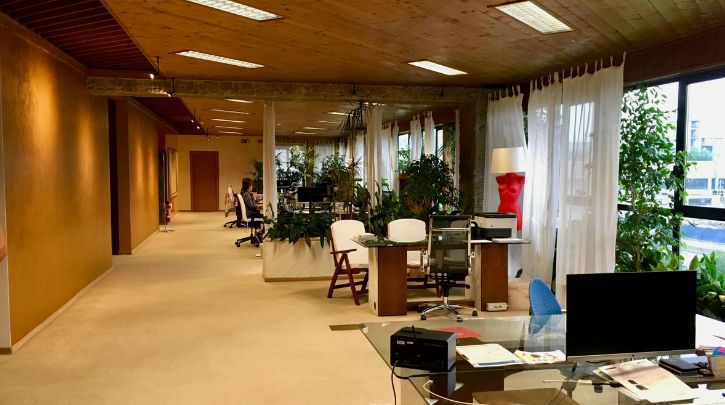
Space management is a fundamental aspect of the modern workplace, impacting how businesses organise and manage their physical spaces to benefit worker well-being, collaboration, and productivity. It embraces ever-evolving workplace trends, including hybrid working lifestyles and technology solutions, while prioritising worker needs. In this guide, we’ll take you through every aspect of space management.
Who needs space management?
Whether you manage a coworking space, flexible office, hybrid workplace, or multi-location workspace, a seamless user experience is expected in physical workplaces, especially those serving hybrid workers (making up 28% of the UK workforce as of Autumn 2024).
Here are some examples of why space management matters in your workspace:
- Aligning with hybrid work models: To meet ever-evolving worker expectations, workplaces now offer a mix of desk and collaboration spaces, amenities, and more distinct services. Effective space management ensures that the workplace continues to meet its users’ needs.
- Limited number of desks: As of July 2023, 56% of UK employers adopted a hot desk policy, while hot desking is the primary product in most coworking spaces. Effective space management gives every worker coming into the workspace a productive workstation.
- Coordinating amenities: Effective amenity management, such as meeting rooms, phone booths, and podcast studios, avoids booking chaos and scheduling conflicts. Handled efficiently, amenity bookings can result in greater revenue generation, especially for coworking and flexible workspaces.
- Visitor and people management: Managing visitors coming in and out of your workspace effectively not only optimises their check-in experiences but also tracks touchpoints, gathering valuable data insights on space usage, which might later be used for remarketing purposes.
- Optimising spaces: Reporting dashboards provide clear, actionable insights into how, when, and where your workstations are being used. Having this visibility influences smarter business decisions towards rethinking your workspace layout, reallocating resources, or refining your membership offerings to match demand.
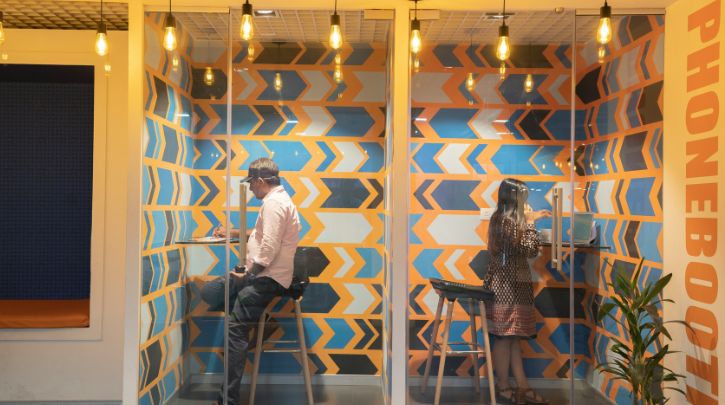
The 3 core elements of space management
People: To activate workspaces and meet workers’ needs, today’s workplaces are designed with more intentionality. A fundamental part of space management is understanding why people go into a workspace. A 2023 CBRE report found that most workers commuted for team collaboration and connection, leading to collaboration spaces being used 64% more throughout the day than desks.
Space: In a well-managed and optimised space, every square foot of workspace serves a purpose. It’s not just about offering desk space, though. According to a recent KnightFrank report, food and beverage facilities, wellness zones, concierge services, and shared spaces also attract people to the office. Despite this, 55% of real estate leaders struggle to understand how much office space they need and the purposes those spaces serve.
Technology: Bridging the gap between people and space, technology enables smarter, more efficient workspace management. Most people are tech savvy in their day-to-day lives, expecting tech-enabled experiences in the workplace. Equally, real estate leaders are seeking ways to gain real-time visibility into how spaces are used, driving data-driven decisions.
-
Everything you need to know about coworking software.
Your Coworking Software Blueprint for Operational Success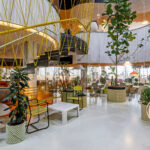
-
Looking to max your space and people management? These are the features you need.
10 key coworking software features
What does a space manager do?
Balancing the needs of people, space, and technology, a space manager oversees the effectiveness of the workspace.
In corporate offices and some flexible workspaces, the office manager takes care of the general office and workforce. The office manager’s day-to-day might include the following activities:
- Overseeing facilities: Often the first friendly face a worker interacts with each day, the office manager is the central point of contact for corporate teams, suppliers, and any third parties.
- Coordinating vendors: The office manager manages the daily upkeep of the workspace, keeping it clean, comfortable, and well-maintained. They organise repairs and services, ideally with minimum disruption to workspace users.
- Booking amenity spaces: Office managers usually book meeting room spaces for team collaboration or visitor meetings. They may also organise off-site bookings in other locations, which may take place in flexible workspaces and coworking spaces.
- Managing supplies: The office manager ensures everyone has what they need in the office, including office equipment, stationery, and kitchen supplies.
- Supporting workplace culture: As companies continue to encourage in-person collaboration, office managers are typically at the helm of organising activities that build a greater sense of workplace culture. Their roles now extend to planning social events, regular lunches, or charity events with team representation.
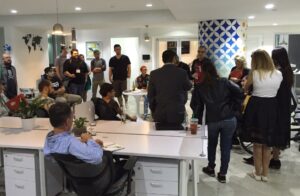
Community managers (not space managers) do these tasks
Coworking spaces and some flexible workspaces that offer coworking hire community managers to facilitate the “co” of coworking – the connection, community, and collaboration. Their daily tasks may involve the following:
Building community: Fundamentally, community managers build a sense of belonging in a coworking space. Coworkers naturally gravitate towards the community manager’s friendly, welcoming, and inclusive personality, traits that make hospitality a key part of the role (many community managers come from hospitality backgrounds)
Facilitating events: Coworking communities are formed through a combination of everyday interactions in the workspace and an exceptional schedule of social events. The community manager plans and markets events for the community.
Marketing the space: Some community managers are responsible for selling coworking memberships. They stay active on social media, promote the workspace and generate leads, and may also conduct coworking tours to prospective members.
Reporting: In smaller coworking spaces, community managers may have a greater sense of responsibility and ownership over a coworking site, reporting to a founder or management team member on its performance.
Although the nature of work is flexible, office and community managers are expected to be in the workplace every day to support workplace teams and communities. Nonetheless, technology solutions can help them manage tasks and processes, freeing up their time to deliver quality customer service rather than spend time on cumbersome admin tasks that could be automated.
-
What are the benefits of software for community managers? Learn more here.
How the Right Coworking Software Can Transform Your Coworking Space
Space management challenges for coworking
While an optimised coworking space is full of energy, has a good ‘vibe’ and celebrates community, there are some common challenges that coworking operators face when it comes to space management.
Hot desk overcrowding
The coworking model often incorporates hot desk membership tiers to maximise space, enabling you to operate with more members than desks (within reason). But challenges can arise when this isn’t managed properly. For instance, imagine you’re running a 30-desk coworking space on a first-come-first-served basis and, one day, 35 hot desk members turn up. The best case scenario – you have other workstations, like collaborative spaces or kitchen seats, for them to sit at. The worst – there’s nowhere for your members to work, and they start questioning what they’re paying you for.
Likewise, another challenging scenario presents itself when your hot desk members start treating their favourite workstation as their own desk. This problem can arise when you’re too generous, allowing coworkers the ability to come into the workspace every day without proper policies (or systems) around desk usage.
For larger coworking businesses operating a number of sites, desk management challenges arise when coworkers hop between sites without checking in, or they join on a cheaper plan, only to use your premium sites most of the time.
Amenity booking chaos
You’re leaving money on the table if your coworking community uses your amenities whenever they like. Even if you charge for meeting room bookings, if you don’t have secure access management systems, you might find coworking members sneaking into an available meeting room to take a quick call or for a chat with a coworker. This can become awkward when the customer who booked your amenity space turns up to find someone else using it…
Amenity entry must be accessible to a degree. If physical keys are in the hands of your community manager, you may end up with an unfortunate situation on a day when they’re not in the workspace and you need to open a meeting room for a customer.
Relying on physical booking processes may also lead to lost opportunities, especially as members can grow tired of searching for team members to book amenities, and even worse when a booking gets forgotten about or the wrong time is booked (we’re all human, after all).
Underutilised spaces
In coworking spaces, workspace design is never a one-size-fits-all. What sticks for your close circle might not work for the rest of your community. When your phone booths are surprisingly full, while your gym is a dead zone, it may be time to properly assess how and when people use your spaces.
-
Thinking about using workspace management software?
10 things to consider before choosing coworking space management software
-
Ideas to optimise your community's experience.
5 Ways to Enhance the Coworking Member Experience
-
Explore other ways to add revenue to your business
Price. Package. Profit. A Coworking Playbook to Lift Margin

Systems that make space management easier
The answer to your coworking challenges is finding the most suitable systems and technology tools to optimise your space management, improve workplace experience, and maximise profit.
1. Booking tools
With 74% of workers willing to commute more often knowing their work friends are booked in, a desk booking tool helps motivate IRL collaboration across teams. Members have oversight of who is coming in and even which desk they’ll be sitting at. Booking tools are designed to prevent hot desk and meeting room overcrowding, and give members a great palm-in-their-hand experience – they can book any amenity instantly.
This opportunity widens your customer base beyond the internal community. You also have the systems to market your coworking space to a larger audience by advertising day passes and hirable spaces through aggregators, with peace of mind that your space won’t get oversubscribed. For meeting room bookings, marketing to external customers has profit-boosting benefits. First-party workspace data from Nexudus found that UK flexible workspaces earned a mean 66% higher price per meeting room booking from external customers than members (who are typically incentivised with discounts). Equally, dynamic pricing maximises profit on amenity bookings during peak hours.
2. Access management
Whether a coworking member books a hot desk for the day or an external customer hires an event space for an evening session, access management fundamentally automates the process. Replacing physical keys to open doors, access control facilitates frictionless entry to workspaces and amenities, gathering data on people’s movements around the space.
Smart access control reduces bottlenecks at peak hours, especially when used with desk or room scheduling tools.
3. Visitor management
Nowadays, people expect frictionless processes at every touchpoint, including arrival. Visitor management systems enable visitors to check in and out of workspaces, support digital sign-ins, send guest notifications, and automate badge printing. If you have a gym or yoga studio alongside your workspace offering, visitor management systems help avoid queues at reception. For events where human interaction matters, it’s easy to switch switch to manual visitor management.
4. Inventory management
In coworking spaces where members share resources, inventory management software helps track space assets, from AV equipment to hot desks.
5. Communication channels
While growing your coworking community, or operating across multiple sites, a communication channel might become your most effective community-building tool. Community managers can interact with all members in one digital space, overcoming common challenges associated with hybrid working.
6. Dashboards and reporting
Make better decisions across your coworking business with accurate insights rather than guesswork. Collect data on customer touchpoints through booking tools and access management, and gather insights in dashboards and through reports. This information gives your team a clearer picture of what you need to adapt in your space, based on how spaces are being used (or underutilised).
-
See how smart access control reduces bottlenecks at peak hours. Especially when used with desk or room scheduling tools.
Discover smart access controls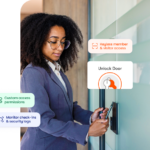
-
Learn how inventory management software helps operators keep track of assets. From AV equipment to hot desks.
Inventory management software explained
From space to strategy: What’s your next step?
While space management is a fundamental aspect of the workplace experience, it only becomes truly powerful when enhanced by technology solutions. Here’s how the tools we’ve covered in this guide solve coworking challenges:
- Desk management simplicity: Gives coworking members the ability to manage their own coworking experiences with booking tools avoids oversubscriptions, increases occupancy, and reduces friction.
- More revenue across every inch of space: Access control systems turn amenities into reliable revenue streams, especially when combined with dynamic pricing.
- Optimised visibility on space usage: You can better understand what’s working and what’s underutilised in your workspace with integrated dashboards and reporting, influencing future business decisions.
- Stronger communities: Your community manager can free up their time by adopting coworking tools, such as communication channels, contributing to an incredible hospitality experience.
Now that you have the essentials, the next step is to put this practice into action. Explore coworking tech software that enhances your space management and future-proofs your coworking operations.
-
Impact Hub King’s Cross gained clearer space visibility with access-based reporting.
Impact Hub King's Cross + Nexudus
-
FuseBox streamlined operations with automated analytics.
See how Nexudus supports this non-profit innovation HQ
More workspace management content
-

- Community
- Coworking Resources
10 Award-winning Coworking Space Designs: A Comprehensive Guide
Vibrant, contemporary workspaces create an undeniable ‘wow’ factor. Textured designs and ambient lighting make spaces feel warm...
Lucy McInally on February 18, 2025 -

- Community
10 Meeting Room Management Best Practices
In-person meetings are well and truly back! After such a long time of meetings being almost entirely...
Kate Tattersfield on March 29, 2023 -

- Uncategorized
“If the coworking space has a good manager, it’s very likely going to be a success” Interview with Rafa Moreno
Rafa Moreno is a computer engineer with an MBA from the EOI Business School. He is passionate...
Carlos Almansa on August 20, 2015
Want to know more about
how Nexudus could help your business?
We’re here to answer any questions you have.
Latest articles
-

- Coworking Resources
- Technology
- Uncategorized
Meeting Room Management and the Tech Behind It
Emily Nguyen on October 31, 2025 -
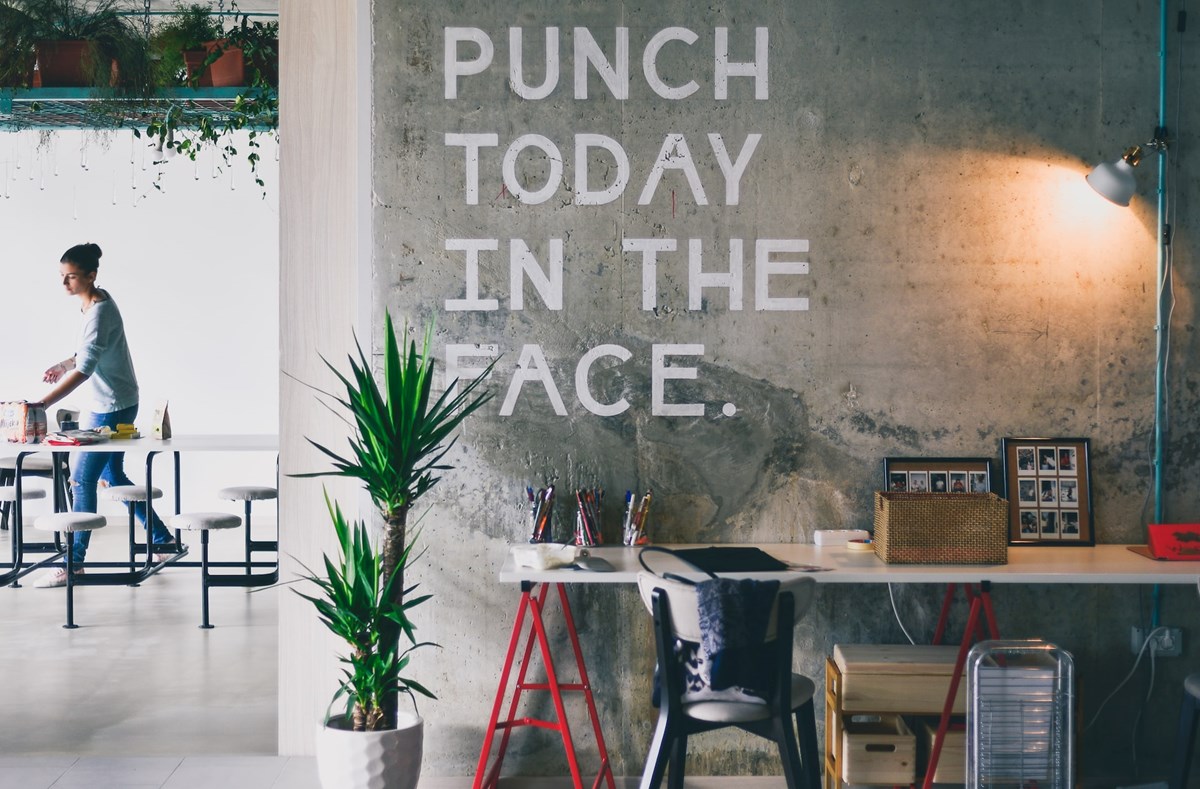
- Coworking
- Coworking News
The 7 Best Female-Focused Coworking Spaces (And Why They Matter)
Kate Tattersfield on October 30, 2025


